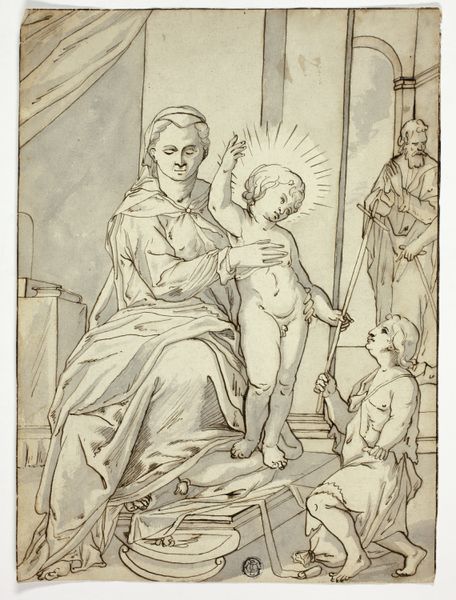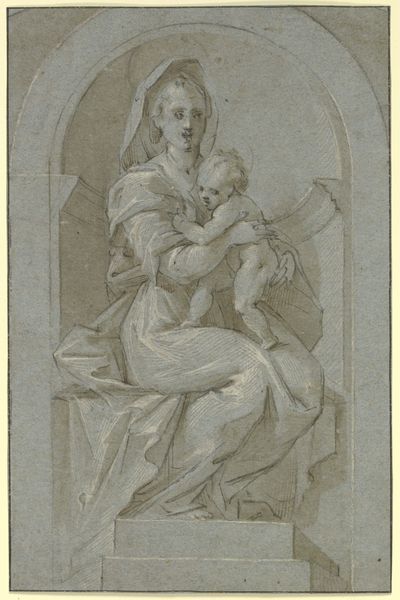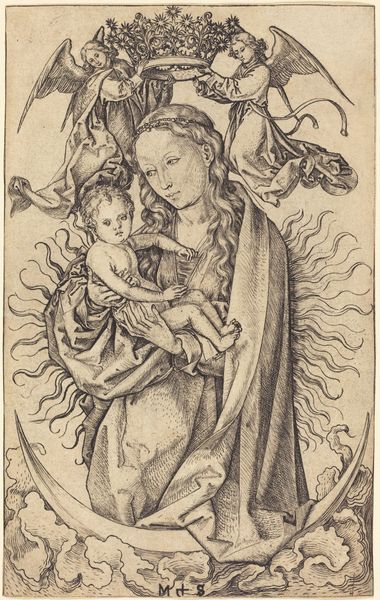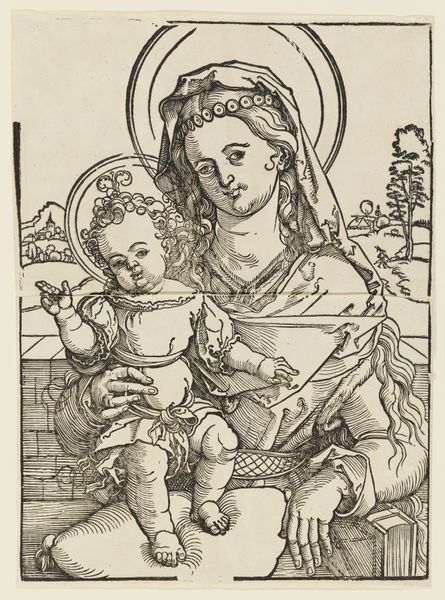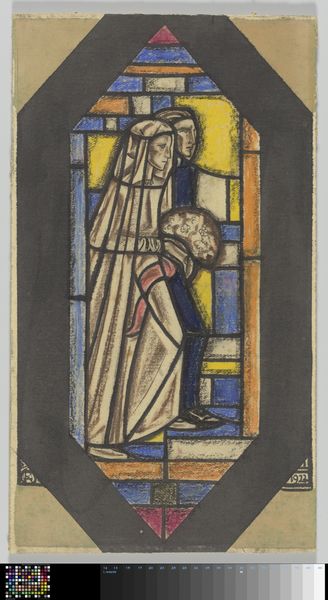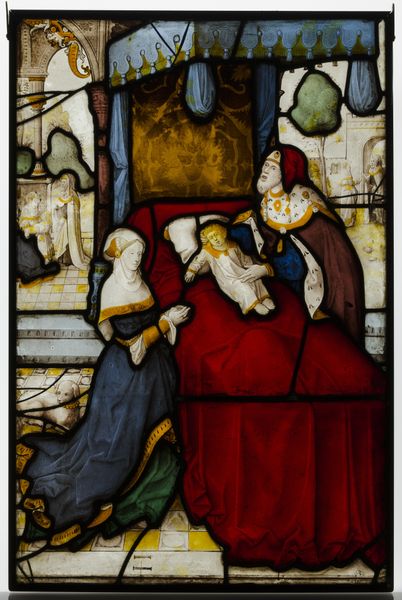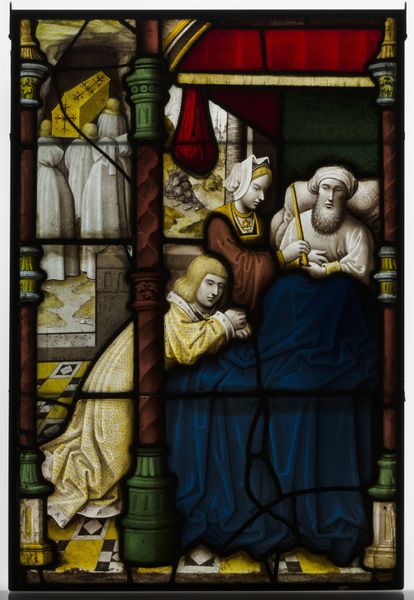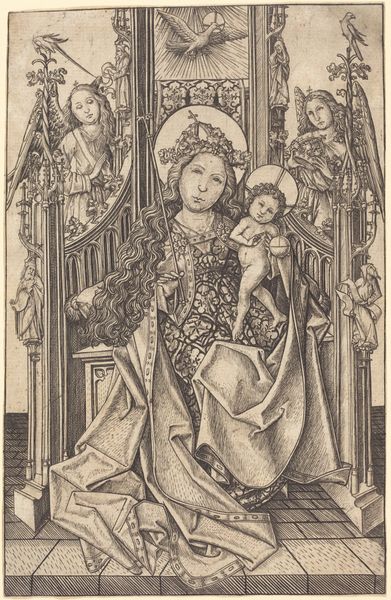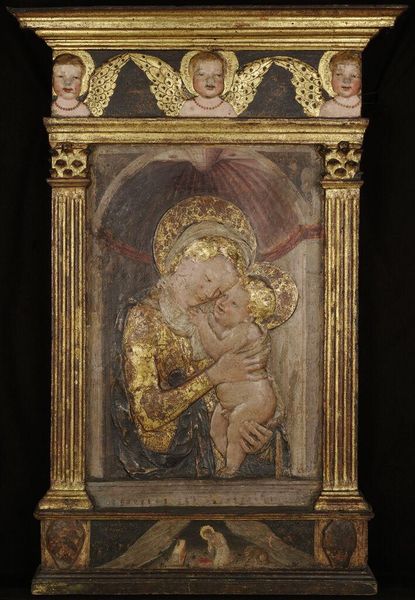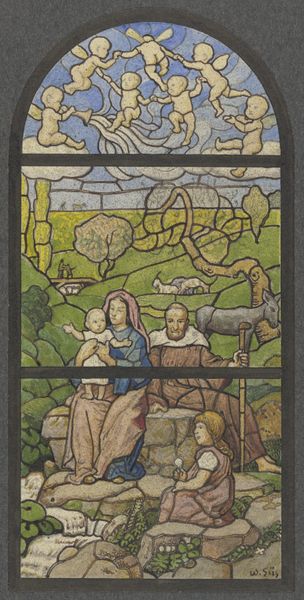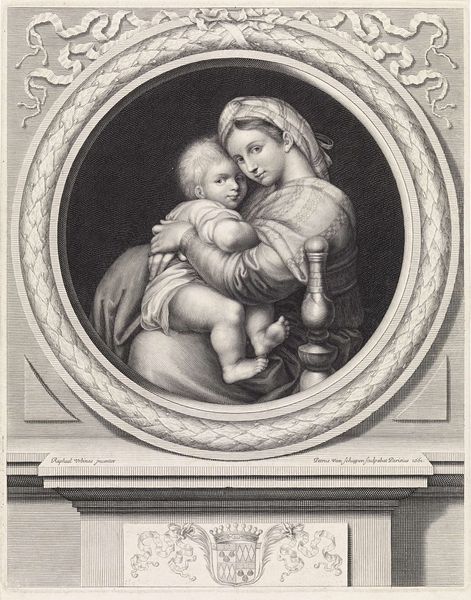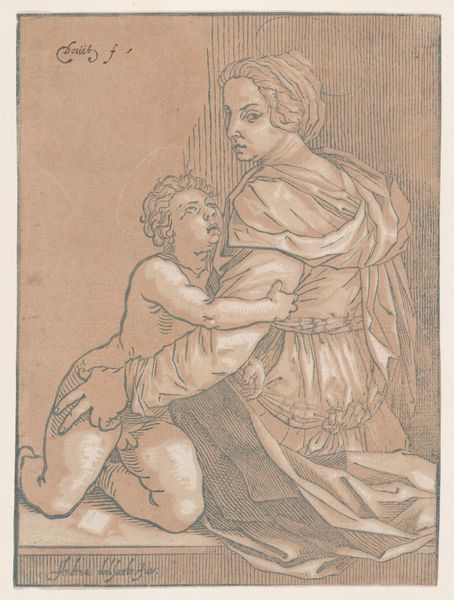
glass
#
portrait
#
medieval
#
glass
#
history-painting
#
portrait art
Dimensions: height 65 cm, width 43.5 cm, depth 2 cm
Copyright: Rijks Museum: Open Domain
Here we see a stained glass window depicting the Madonna and Child, made by Pieter Coecke van Aelst. Above the Virgin’s head are cherubic heads, a motif that hearkens back to classical antiquity, where winged figures symbolized divine messengers. But here, they're rendered with a tender softness characteristic of the Renaissance, reflecting a shift from the severe to the more humanistic. Consider the motif of the Madonna and Child itself. Across cultures and epochs, the image of a mother cradling her child resonates deeply. Think back to ancient Egyptian depictions of Isis with Horus, or even earlier fertility figures, reflecting our innate, perhaps subconscious, fascination with nurture and protection. The persistence of this image speaks to its potent emotional charge, and its enduring relevance. Note how the Renaissance cherubs echo those earlier forms, yet with a distinct cultural inflection. This exemplifies how artistic symbols evolve, their meanings layered over time. This window, like all art, acts as a cultural palimpsest, each layer whispering stories of human experience and collective memory.
Comments
No comments
Be the first to comment and join the conversation on the ultimate creative platform.

